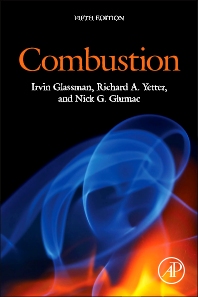Academic Press
- 1st Edition
- Volume 2
- November 25, 2014
- Rodolfo Paoletti + 1 more
- English
- Paperback9 7 8 1 4 8 3 2 1 0 9 8 8
- eBook9 7 8 1 4 8 3 2 2 4 4 1 1

Advances in Lipid Research
- 1st Edition
- November 25, 2014
- Michael J. Zigmond + 2 more
- English
- Hardback9 7 8 0 1 2 3 9 8 2 7 0 4
- eBook9 7 8 0 1 2 3 9 8 2 8 0 3

Neurobiology of Brain Disorders
- 1st Edition
- Volume 5
- November 25, 2014
- Rodolfo Paoletti + 1 more
- English
- Paperback9 7 8 1 4 8 3 2 1 1 0 1 5
- eBook9 7 8 1 4 8 3 2 2 4 4 4 2

Advances in Lipid Research
- 1st Edition
- November 25, 2014
- D. Rao Sanadi
- English
- Paperback9 7 8 1 4 8 3 2 1 1 3 1 2
- eBook9 7 8 1 4 8 3 2 2 4 7 4 9

Current Topics in Bioenergetics
- 1st Edition
- November 25, 2014
- D. R. Sanadi
- English
- Paperback9 7 8 1 4 8 3 2 1 1 3 0 5
- eBook9 7 8 1 4 8 3 2 2 4 7 3 2

Current Topics in Bioenergetics
- 1st Edition
- Volume 4
- November 25, 2014
- Rodolfo Paoletti + 1 more
- English
- Paperback9 7 8 1 4 8 3 2 1 1 0 0 8
- eBook9 7 8 1 4 8 3 2 2 4 4 3 5

Advances in Lipid Research
- 1st Edition
- November 25, 2014
- D. R. Sanadi
- English
- Paperback9 7 8 1 4 8 3 2 1 1 2 9 9
- eBook9 7 8 1 4 8 3 2 2 4 7 2 5

Current Topics in Bioenergetics
- 1st Edition
- Volume 6
- November 25, 2014
- Rodolfo Paoletti + 1 more
- English
- Paperback9 7 8 1 4 8 3 2 1 1 0 2 2
- eBook9 7 8 1 4 8 3 2 2 4 4 5 9

Advances in Lipid Research
- 1st Edition
- Volume 3
- November 25, 2014
- Rodolfo Paoletti + 1 more
- English
- Paperback9 7 8 1 4 8 3 2 1 0 9 9 5
- eBook9 7 8 1 4 8 3 2 2 4 4 2 8

Advances in Lipid Research
- 5th Edition
- November 24, 2014
- Irvin Glassman + 2 more
- English
- Paperback9 7 8 0 1 2 8 1 0 0 1 3 4
- Hardback9 7 8 0 1 2 4 0 7 9 1 3 7
- eBook9 7 8 0 1 2 4 1 1 5 5 5 2

Combustion